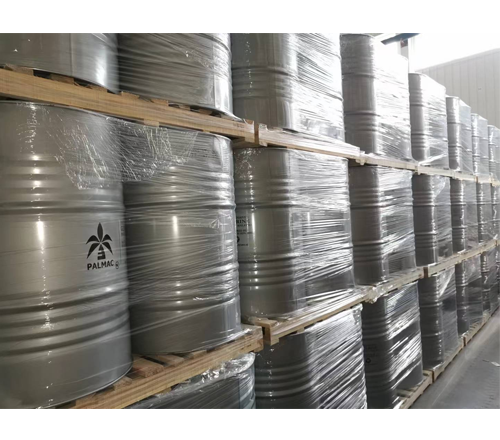
Coconut Glycerin
Chinese name: Glycerol
Foreign name: Glycerol Alias: Glycerin
Chemical formula: C3H8O3
Molecular weight: 92.094
CAS registration number: 56-81-5
EINECS registration number: 200-289-5
Melting point: 17.4 ℃
Boiling point: 290 ℃
Water solubility: any proportion Miscibility
Density: 1.297 g/cm³
Appearance: Colorless, odorless, transparent viscous liquid
Flash point: 177 ℃ (OC)
Packing specification: 250KG/barrel
Product Description
Production method: The industrial production method of glycerin can be divided into two categories: the method using natural oil as raw material, the obtained glycerin is called natural glycerin, and the synthetic method using propylene as raw material, the obtained glycerin is called synthetic glycerin.
Natural Glycerin
Before 1984, all glycerin was recovered from the by-products of soap making from animal and vegetable fats. So far, natural oils and fats are still the main raw materials for the production of glycerin, of which about 42% of natural glycerin is obtained from soap by-products, and 58% is obtained from fatty acid production. Saponification of fats and oils in the soap making industry: The saponification reaction product is divided into two layers: the upper layer mainly contains fatty acid sodium (soap) and a small amount of glycerin, and the lower layer is waste lye, which is a dilute glycerin solution containing salts and sodium hydroxide, generally containing 9-16% glycerin and 8 inorganic salts (20%). Grease reaction: Glycerin water (also known as sweet water) obtained from oil hydrolysis has a higher glycerol content than soap-making waste liquid, about 14-20%, and inorganic salt 0-0.2%. In recent years, the continuous high-pressure hydrolysis method has been widely used, and the reaction does not use a catalyst. The obtained sweet water generally does not contain inorganic acids, and the purification method is simpler than the waste lye. Whether it is soap making waste liquid or glycerin water obtained from oil hydrolysis, the glycerin content is not high, and all contain various impurities. The production process of natural glycerin includes purification, concentration to obtain crude glycerin, and crude glycerin distillation, decolorization, Refining process for deodorization.
Synthetic Glycerin
The various pathways for the synthesis of glycerol from propylene can be grouped into two broad categories, namely, chlorination and oxidation. Propylene chlorination and propylene irregular acetic acid oxidation are still used in industry.
Industrial Grade Glycerin
The amount of industrial grade glycerin is diluted with 1/2 amount of distilled water. After stirring well, add activated carbon and heat to 60-70°C for decolorization treatment. Then, vacuum filter to ensure that the filtrate is clear and transparent. Control the dropping speed, add the filtrate to the pre-treated column mixed with 732 type strong acid cation resin and 717 type strong base anion and cation resin to absorb and remove electrolytes and aldehydes, pigments, esters and other non-electrolyte impurities in glycerin.
The glycerin solution after removing impurities is distilled under reduced pressure, the vacuum degree is controlled above 93326Pa, the kettle temperature is 106-108°C, after most of the water is evaporated, the kettle temperature is raised to 120°C for rapid dehydration, and the heating is stopped when no water comes out. The material in the kettle is the finished product.
Industrial applications
1. Used in the manufacture of nitroglycerin, alkyd resin and epoxy resin.
2. In medicine, it is used to prepare various preparations, solvents, hygroscopic agents, antifreeze agents and sweeteners, and to prepare ointments or suppositories for external use.
3. In the paint industry, it is used to prepare various alkyd resins, polyester resins, glycidyl ethers and epoxy resins.
4. In the textile and printing and dyeing industries, it is used to prepare lubricants, hygroscopic agents, fabric anti-shrinkage treatment agents, diffusing agents and penetrating agents.
5. In the food industry, it is used as a hygroscopic agent and solvent for sweeteners and tobacco agents.
6. It is widely used in industries such as papermaking, cosmetics, tanning, photography, printing, metal processing, electrical materials and rubber.
7. It can also be used as automobile and aircraft fuel and antifreeze in oil fields.
8. Glycerin can be used as a plasticizer in the new ceramic industry
Online Inquiry